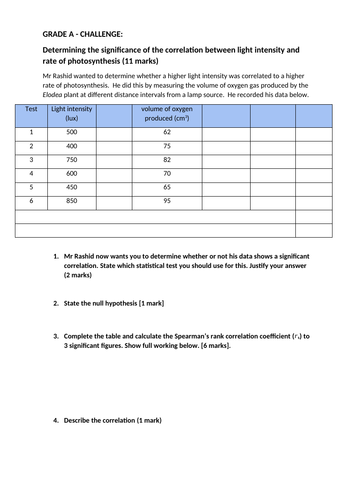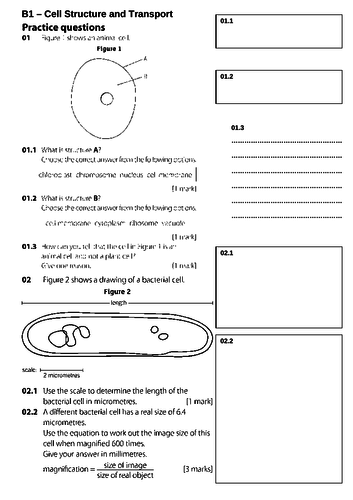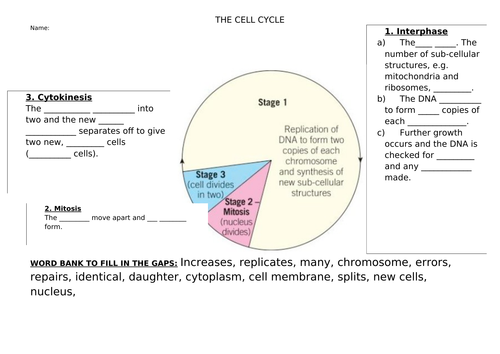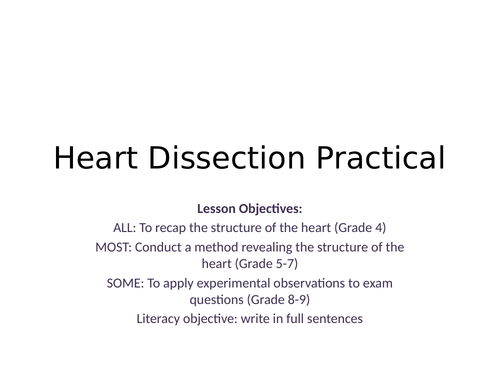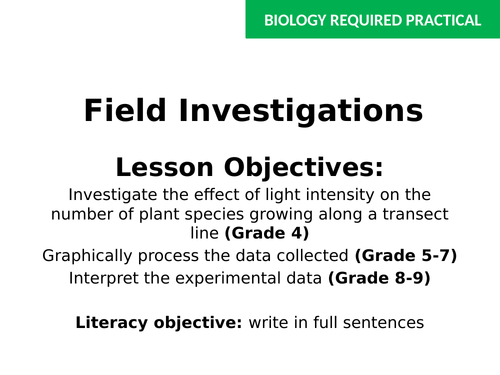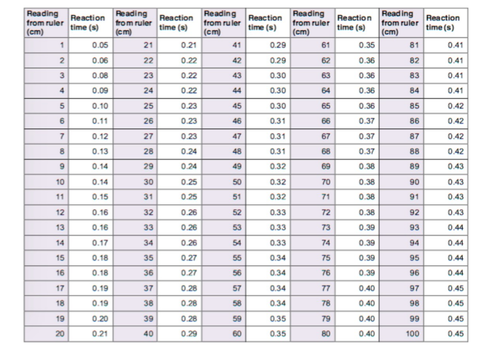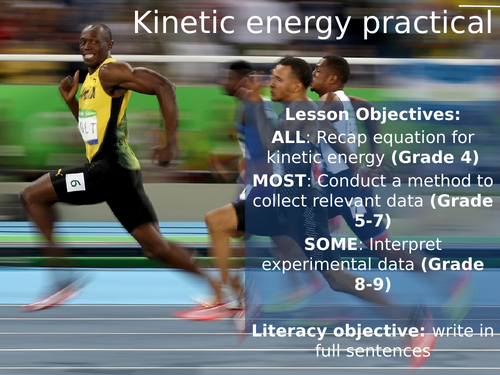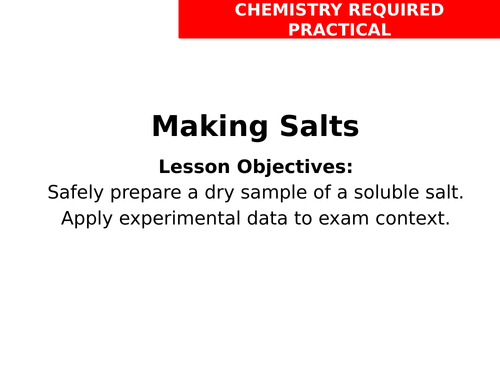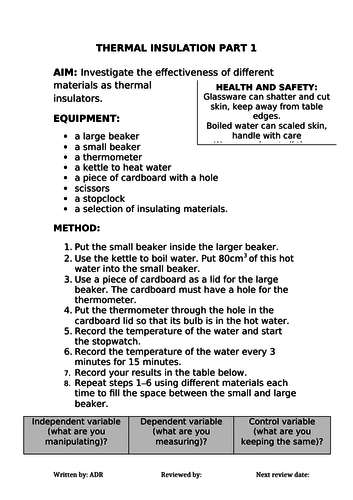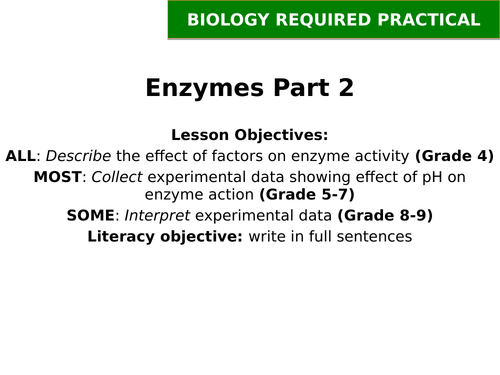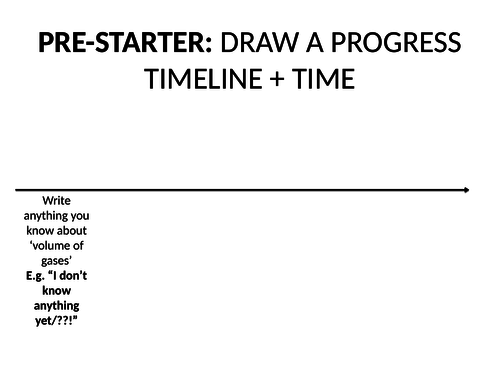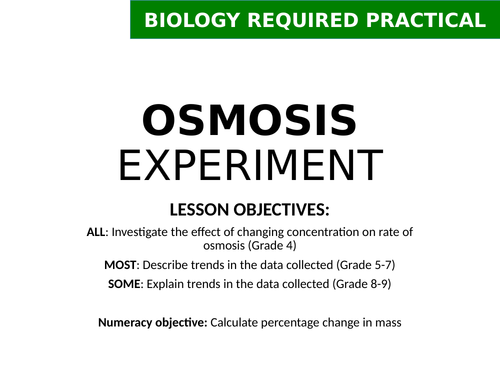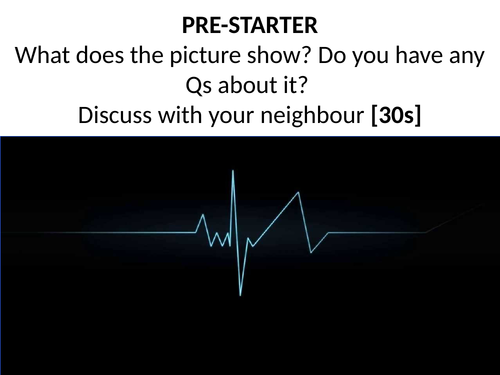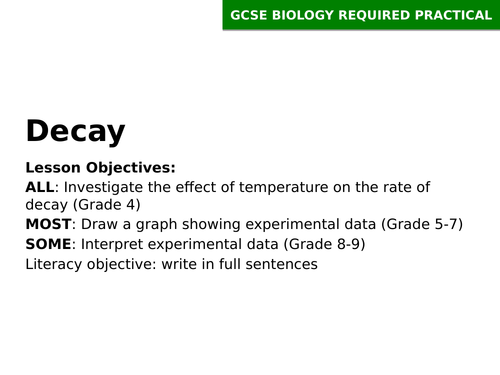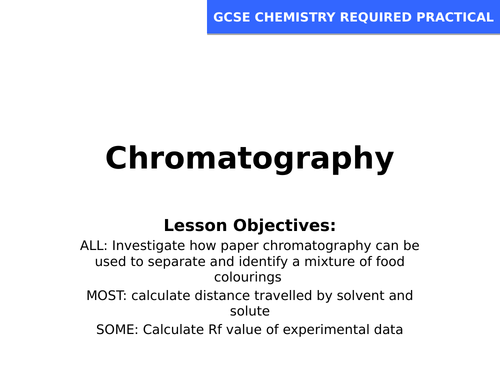172Uploads
30k+Views
2k+Downloads
All resources

OCR A-Level Biology (H420): Chapter 10 - Classification and Evolution - Spearman's Rank (worksheet)
Grade A-A* Challenge Worksheet for Spearman’s Rank calculations. Mark Scheme included.

2018 AQA GCSE Biology Unit 1 (B1): Coronary Heart Disease and Treatment L15
This lesson is for teaching the above named lesson as part of the Organisation module of Biology Unit 1 (B1) of the new 2018 AQA GCSE specifications for Combined Science: Trilogy and GCSE Biology.
The lesson has the following features embedded:
Lesson has Bloom’s Taxonomy embedded throughout which are also graded for differentiation.
Stretch and challenge tasks throughout (including Grade 8-9+ questions and extended writing)
AfL (3 progress checks embedded)
Differentiation is strong as has been noted in all formal school observations for the last 2 years of teaching AQA.
Narrative of lesson structure is clear and focused as well as engaging.
Pre-starter prepared.
The lesson is geared with top-down approach pedagogy and provide inclusive differentiation for low attaining and medium attaining pupils as well.
The lesson should be ‘tweaked’ to meet the needs of your own pupils.

2018 AQA GCSE Biology Unit 1 (B1): Cell Structure and Transport Exam Questions
Cell Structure and Transport Exam Questions Pack. With lots of extended writing style questions as well. Enjoy.

2018 AQA GCSE Biology Unit 1 (B1): Mitosis and the Cell Cycle L4
This lesson is for teaching the above named lesson as part of the Cell Biology module of Biology Unit 1 (B1) of the new 2018 AQA GCSE specifications for Combined Science: Trilogy and GCSE Biology.
The lesson has the following features embedded:
Lesson has Bloom’s Taxonomy embedded throughout which are also graded for differentiation.
Stretch and challenge tasks throughout (including Grade 8-9+ questions and extended writing)
AfL (3 progress checks embedded)
Differentiation is strong as has been noted in all formal school observations for the last 2 years of teaching AQA.
Narrative of lesson structure is clear and focused as well as engaging.
Pre-starter prepared.
The lesson is geared with top-down approach pedagogy and provide inclusive differentiation for low attaining and medium attaining pupils as well.
The lesson should be ‘tweaked’ to meet the needs of your own pupils.

2018 AQA GCSE Biology Unit 1 (B1): Heart Dissection Practical
A fun lesson for dissecting a lamb’s heart. Enjoy.

2018 AQA GCSE Biology Unit 2 (B2): Field Investigations Required Practical
This unique and high-quality pack contains all resources needed to deliver the Field Investigations Required Practical for the new 2018 AQA GCSE Biology and GCSE Combined Science: Trilogy specification.

AQA GCSE Biology Unit 2 (B2): Reaction Time Required Practical
This unique and high-quality pack contains all resources needed to deliver the Reaction Time Required Practical for the new 2018 AQA GCSE Biology and GCSE Combined Science: Trilogy specification.

Kinetic Energy Practical
The lesson has been developed with the following embedded features:
Bloom’s taxonomy
Differentiation and challenge can be done by using the ‘two before me’ - high attaining students challenged not to ask the teacher for help until they’ve used 2 sources of help/support: e.g. a friend, their book notes etc.
Clear narrative in the lesson - designed with a top-down approach which can be readily differentiated to different classes.
Teacher is encouraged to ‘tweak’ the lessons to suit the learning needs of their pupils.

2018 AQA GCSE Biology Unit 2 (B2): Kidneys and Kidney Dialysis
This lesson is for teaching the above named lesson as part of the Homeostasis and Response Module of Biology Unit 2 (B2) of the new 2018 AQA GCSE specification for GCSE Biology. This pack contains two lessons to deliver content on Kidney function and Kidney disease treatment methods.
The lesson has the following features embedded:
Lesson has Bloom’s Taxonomy embedded throughout which are also graded for differentiation.
Stretch and challenge tasks throughout (including Grade 8-9+ questions and extended writing)
AfL (3 progress checks embedded)
Differentiation is strong as has been noted in formal school observations for the last 2 years of teaching AQA.
Narrative of lesson structure is clear and focused as well as engaging.
Pre-starter prepared.
The lesson is geared with top-down approach pedagogy and provide inclusive differentiation for low attaining and medium attaining pupils as well.
The lesson should be ‘tweaked’ to meet the needs of your own pupils.
NOTE: You can purchase the entire lesson pack for GCSE Biology Unit 2 and Unit 1 (or both units as a whole pack) which contains all Trilogy and Triple Science lessons at a 20% discount. Please look through the resources to find this special ongoing offer.

AQA GCSE Physics Unit 1 (P1): Energy Module - Thermal Insulation Required Practical L8
This lesson is for teaching the above named lesson as part of the Energy Module of Physics Unit 1 (P1) of the new 2018 AQA GCSE specification for GCSE Physics.
The lesson has the following features embedded:
Lesson has Bloom’s Taxonomy embedded throughout which are also graded for differentiation.
Stretch and challenge
AfL (progress checks embedded)
Narrative of lesson structure is clear and focused as well as engaging.
Pre-starter prepared.
The lesson is geared with top-down approach pedagogy and provide inclusive differentiation for low attaining and medium attaining pupils as well.
The lesson should be ‘tweaked’ to meet the needs of your own pupils.

2018 AQA GCSE Chemistry Unit 1 (C1): Making Salts Required Practical
This unique and high-quality pack contains all resources needed to deliver the Making Salts Required Practical for the new 2018 AQA GCSE Chemistry and AQA GCSE Combined Science: Trilogy specifications.

2018 AQA GCSE Physics Unit 1 (P1): Thermal Insulation Required Practicals (Part 1 and 2). L8
This unique and high-quality pack contains all resources needed to deliver the Thermal Insulations Required Practicals (Parts 1 and 2) for the new 2018 AQA GCSE Physics and AQA GCSE Combined Science: Trilogy specifications.

2018 AQA GCSE Biology Unit 1 (B1): Enzymes Required Practical
This pack contains all resources needed to deliver the Enzymes and pH Required Practical for AQA GCSE Biology and Combined Science: Trilogy for the new 2018 AQA GCSE science specifications.

2018 AQA GCSE Chemistry Unit 1 (C1): Quantitative Chemistry - Limiting Reactants L4
This is the lesson used to teach Limiting Reactants in accordance with the new 2018 AQA GCSE specification for Combined Science: Trilogy and GCSE Chemistry.
This high quality lesson has the following features:
Lessons have Bloom’s Taxonomy embedded throughout which are also graded for differentiation.
Stretch and challenge tasks throughout (including Grade 8-9+ questions and extended writing)
AfL (3 progress checks per lesson embedded)
Differentiation is strong as has been noted in all formal school observations for the last 2 years of teaching AQA. Observations of these lessons has always evidenced that these lessons are consistently of a ‘good’ OFSTED standard.
Narrative of lesson structure is clear and focused as well as engaging.
Pre-starter prepared.
All lessons are geared with top-down approach pedagogy and provide inclusive differentiation for low attaining and medium attaining pupils as well.
In order to take full advantage of this resource, it should be ‘tweaked’ to the needs of your own pupils.

2018 AQA GCSE Chemistry Unit 1 (C1): Quantitative Chemistry - Volume of Gases L10
This is the lesson used to teach Volume of Gases in accordance with the new 2018 AQA GCSE specification for Combined Science: Trilogy and GCSE Chemistry.
This high quality lesson has the following features:
Lessons have Bloom’s Taxonomy embedded throughout which are also graded for differentiation.
Stretch and challenge tasks throughout (including Grade 8-9+ questions and extended writing)
AfL (3 progress checks per lesson embedded)
Differentiation is strong as has been noted in all formal school observations for the last 2 years of teaching AQA. Observations of these lessons has always evidenced that these lessons are consistently of a ‘good’ OFSTED standard.
Narrative of lesson structure is clear and focused as well as engaging.
Pre-starter prepared.
All lessons are geared with top-down approach pedagogy and provide inclusive differentiation for low attaining and medium attaining pupils as well.
In order to take full advantage of this resource, it should be ‘tweaked’ to the needs of your own pupils.

2018 AQA GCSE Biology Unit 1 (B1): Osmosis Required Practical
This pack contains all resources needed to deliver the Osmosis Required Practical for AQA GCSE Biology and Combined Science: Trilogy for the new 2018 AQA GCSE science specifications.

2018 AQA GCSE Physics Unit 1 (P1): Radiation and Absorption Required Practical
This unique and high-quality pack contains all resources needed to deliver the Radiation and Absorption Required Practical for the new 2018 AQA GCSE Physics and AQA GCSE Combined Science: Trilogy specifications.

2018 AQA GCSE Biology Unit 1 (B1): Pacemakers L12
This lesson is for teaching the above named lesson as part of the Organisation module of Biology Unit 1 (B1) of the new 2018 AQA GCSE specifications for Combined Science: Trilogy and GCSE Biology.
The lesson has the following features embedded:
Lesson has Bloom’s Taxonomy embedded throughout which are also graded for differentiation.
Stretch and challenge tasks throughout (including Grade 8-9+ questions and extended writing)
AfL (3 progress checks embedded)
Differentiation is strong as has been noted in all formal school observations for the last 2 years of teaching AQA.
Narrative of lesson structure is clear and focused as well as engaging.
Pre-starter prepared.
The lesson is geared with top-down approach pedagogy and provide inclusive differentiation for low attaining and medium attaining pupils as well.
The lesson should be ‘tweaked’ to meet the needs of your own pupils.

2018 AQA GCSE Biology Unit 2 (B2): Decay Required Practical
This unique and high-quality pack contains all resources needed to deliver the Decay Required Practical for the new 2018 AQA GCSE Biology and GCSE Combined Science: Trilogy specification.

2018 AQA GCSE Chemistry Unit 2 (C2): Chromatography Required Practical
This unique and high-quality pack contains all resources needed to deliver the Chromatography Required Practical for the new 2018 AQA GCSE Chemistry and AQA GCSE Combined Science: Trilogy specifications.

